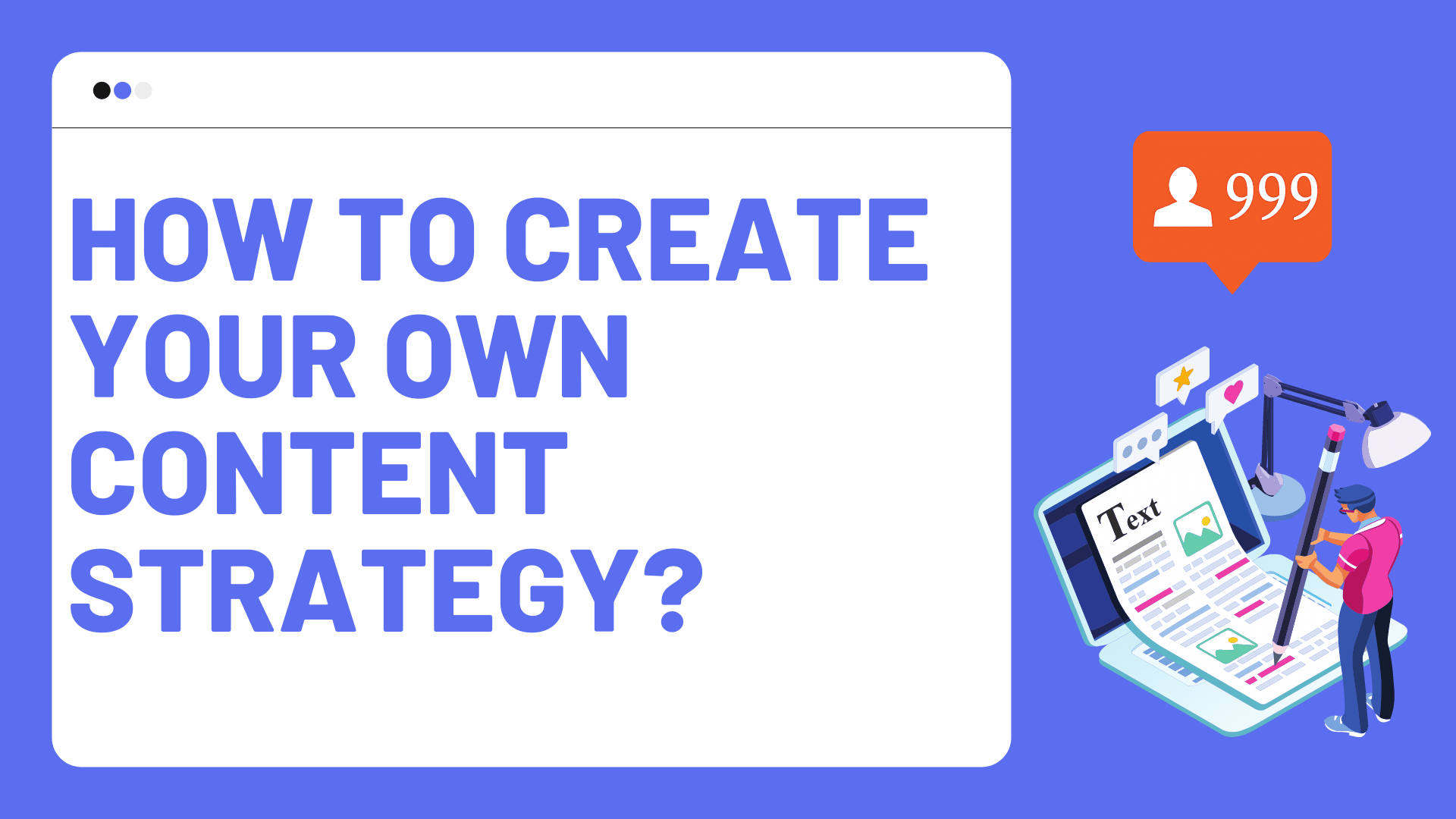How to create your own content strategy?
Content marketing is the present and the future, it is what makes up the internet and is the main pillar of the well-known Inbound marketing, and the basis of this is the content strategy.
With this content we intend to entertain, convince, inform, explain, among many other things. In addition, this category is not only composed of content in text format, but any form of content possible.
The content strategy is key to a business and must be at the same time unique, this tells you the roadmap of the content of your business all focused on what it is intended to achieve with it. In this article we will explain in a simple way how to develop a content strategy in 7 steps.
Define the objectives of the strategy
- Build your target audience
- Strategy
- Approach and types of content
- Dissemination channels
- Frequency
- KPIs

1. Define the objectives of the strategy
One of the key points in the development of any strategy is the definition of clear objectives. Therefore, your objective should not be to generate content just for the sake of it, but thinking about getting somewhere.
For example, some of the objectives that a content strategy may have are:
- Improve positioning
- Branding
- Increase conversions
…
These also have to be clear, it is not enough to put “Increase positioning”. If not accurate figures, such as reaching the first page of google for certain keywords, or reach 10 thousand monthly visits to the website.
This point is key, because based on it we will design the rest of the strategy and it is also the compass that will allow us to see if we are going in the desired direction. Depending on the objective we select in point 7, we will choose the kpis that best suit.
Questions that can help you:
-What is the current situation?
-Where is our company today?
-Where do we want to go?
-What do we want to achieve with the strategy?
-In how long?
-What actions have worked for us in the past?
…
2. Build your target audience
Building your target audience, or in the marketing world better known as buyer persona, is the basis for any marketing strategy. The best way to build it and create an adequate profile, in order to create content for them, is to get under their skin. By this I mean building that profile from the inside, writing down their concerns, their fears, their aspirations, discovering the innermost part of the person.
Below you can see a very visual template for you to design the profile of your target customer.
These questions are not fixed, there are many more which for your specific business can give a better image of the customer. It is also advisable to write demographic information of the target audience in order to have an even more concrete image.

3. Strategy
This is a very important part of the design of the content strategy, at the end of this step you have to design strategies and tactics in relation to the content taking into account the objectives to be achieved.
This involves designing tactics to define how your content will reach your buyer persona, and what type of content it will be among many other features. If this content will be sent by email, or will be published on a certain social network, or will be content on your website optimized for SEO.
All strategies and tactics designed in this step have to have a vision on the goal we want to achieve.
For example, if our goal is to get more impressions on our website organically. For example, we could design a content strategy optimized for SEO, and we would also try to look for collaborations with people in the sector to get links. It is very important that the contents are adapted to the search intention of the keyword.
4. Focus and types of content
Having clear the objectives we want and our buyer persona, now it’s time to design an optimal editorial guide for that approach. With this we intend to reflect our company’s way of being, our way of communicating, and the approach we want to give to the brand.
Depending on the audience and the type of business, the language will be very different. But whatever the language you want to convey, always look for simplicity in your communications. By this I mean clear and coherent expressions both with your brand and with your client.
At this point you must determine what type of content you are going to create, whether it will be text or audiovisual works. Let’s put ourselves in the shoes of a video game store, maybe a good type of content for it is to create a podcast for video game lovers, we talk about video games with a language of the industry itself (geek).
At this point we must detail the use of all those specific parts involved in a text, to give that image of coherence and speak directly to our buyer persona.
Some more specific questions you can ask yourself are:
Do we use you or you?
What semantic recommendations will we use?
Anglicisms yes or no?
What are going to be the common words?
What are the stigmatized expressions in our industry?
Which ones will we use?
Are we going to use emoticons?
Hybrid content pieces?
Among many other questions that you can ask yourself, and that will help you to give an image of coherence.
5. Dissemination channels
This is a short, but very important point. If you share content in channels where your audience is not usually present, it is very difficult to reach them. So when you have designed your buyer persona, you have to make it clear with their respective small study, where you can target your audience in an optimal way. Because maybe using email marketing with a young audience and a B2C product is not the best option. All this is a matter of analyzing it and see depending on your business where your content will have more ROI.
For example, a company that trains senior executives can have LinkedIn as a pillar of its strategy in which it will create valuable content focused on this audience and will also do its communication work with them.

6. Frequency
This is a basic but important point of the content strategy. How often are we going to share it? Daily, weekly?
This decision has to be based on all the previous steps, depending on the diffusion channel and the objectives of the strategy, the frequency can be from several times a day to every 2 weeks.
7.KPIs
The metrics we choose and measure are a key factor when managing any business strategy.
It is therefore important to choose the metrics that are most aligned with our objective and that allow us to accurately measure whether the strategy is heading in the right direction. These metrics depend on the objective, the content dissemination channel and the type of content. For example, in a youtube video, a very relevant metric is the time of visualization and probably much more than the visits of the video itself. However in a Google My Business page, a very important metric is the number of interactions of users with your listing, if they have requested a quote, if they have phoned or if they have selected to go to the store.
Some examples of relevant metrics for a content strategy can be:
- Traffic
- Time per customer
- Number of users
- % of opening of an email
- User interaction
- R.O.I of contents
- Lead generation
Among many others, which can be very relevant to your business in particular
